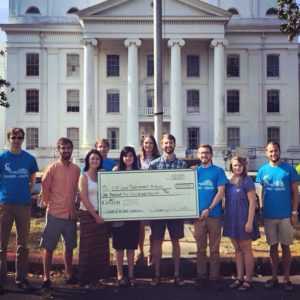IMT is laser-focused on unleashing the potential of energy-efficient buildings to improve bottom lines and property value, drive economic growth, and reduce harmful pollution to create healthier, resilient cities. Collaborating with building owners, tenants, governments, and other city and corporate stakeholders, as well as NGOs and strategic partners, IMT’s expert staff strive to catalyze collective and permanent market change. So, who is IMT? Get to know our subject matter experts in this blog series.
Research Analyst Jake Duncan is the newest member of the IMT team. He shares how energy efficiency checks all the boxes of a critical resource and how IMT empowers local actors to achieve it in
newest member of the IMT team. He shares how energy efficiency checks all the boxes of a critical resource and how IMT empowers local actors to achieve it in
every building.
What do you value most about energy efficiency and high-performance buildings?
The growing focus on energy efficiency represents a fundamental shift in the way we think about energy and the built environment. For decades, the general approach has been building more generation and larger buildings to meet the demands of a growing country. But, as we learn more about the environmental and economic impacts of these decisions, it’s clear that there is more value in first taking the infrastructure that we already have and making it increasingly efficient.
When I first started working in the energy industry, I was most interested in renewables—and the growth of resources like solar and wind is incredible—but I also began to recognize that the other side of the equation, the demand side, can really drive energy and climate savings by reducing how much energy we really need and how well we use it, particularly in our buildings.
Energy efficiency means rethinking how we use our resources on a daily basis; it shines a spotlight on the economic and environmental costs of the things we see every day but never think about, like an old HVAC system. Efficiency offers innovative ways to benefit both individuals and society at the same time by pushing our buildings and energy systems to “grow up” and advance—becoming increasingly resilient, durable, and sustainable.
What perspective do you bring to IMT?
The wonderful thing about IMT is the breadth of perspectives that our staff has and the effort we put in to include all our different strengths in our work. I studied economics in undergrad, am currently working on my Masters in Climate Science and Policy at Bard College’s Center for Environmental Policy, and recently completed a deep-dive report into utility resource planning at the think tank Resources for the Future. So, I have spent a lot of time and research thinking about our overall energy systems from both the demand and supply sides. Now, I get to expand and apply that knowledge together with building codes experts, real estate professionals, former engineers, and city government staff.
What does market transformation mean to you?
When I think about transforming the energy efficiency market, it’s all about perspective—revolutionizing what “energy efficiency” means to industry and turning what can often be an afterthought into the first thing that comes to mind when people are evaluating buildings. It also means dissolving the barriers to growth and making energy-efficient buildings the status quo.
For example, one of the critical groups that IMT works with is small businesses. Through the Small Business Energy Initiative, we arm local chambers of commerce with tools and guidance to help their small business members access energy efficiency technology and financing opportunities that can support a significant boost in their bottom lines—helping them recognize that efficiency is good for their buildings, good for their businesses, and good for their planet.
Another group IMT works with is city governments. As cities across the nation act to reduce carbon emissions and establish ambitious energy and carbon reduction goals and implementation plans, IMT is working with them to educate leaders and community members about how energy efficiency is a key pathway to achieving these goals. Efficient buildings complement growing portfolios of renewables and bring down the overall cost of the clean energy transition, while also bringing in local jobs and expanding health benefits. Also, as city governments internalize efficiency in their goals, the drive to meet those goals can kick-start valuable public-private partnerships that establish new relationships and innovative approaches to solving the joint challenge of climate change.
What are you hoping to learn in 2019?
I am excited to learn more about how to turn thoughts and conversations into action. Energy efficiency checks all the boxes—the business case is clear, and the local and global benefits are certain—yet the markets are not doing nearly as much as they could to achieve it. I want to work on empowering local actors to think about energy efficiency and connecting them with the right tools to take action.
What is something your coworkers may not know about you?
During undergrad, I was part of a nonprofit group called Sounds of the South that organized charity concerts with local musicians to raise money for local economic development efforts. Pictured is our group donating over $1,400 after one event!
I am also scuba certified and have done over 25 dives in incredible spots like the British Virgin Islands and the Florida Keys.